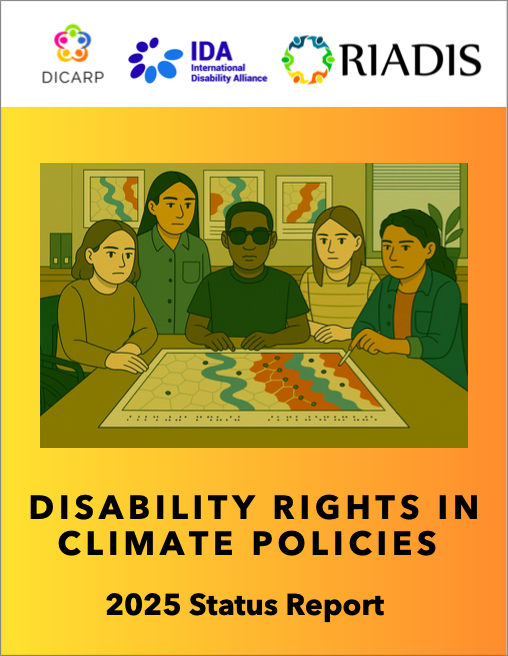Centre for Human Rights & Legal Pluralism, International Disability Alliance & Red Latinoamericana de Organizaciones de Personas con Discapacidad y sus Familias
Disability Rights in Climate Policies: 2025 Status Report
This year’s systematic analysis of disability rights in domestic climate underscores that parties to the Paris Agreement are making incremental progress toward disability-inclusive climate governance. In 2022, only 37 governments referenced disability in their NDCs and 46 in adaptation policies. The 2025 findings show that 54 NDCs and 99 adaptation policies now reference disability.
Nonetheless, the overall picture remains one of significant gaps and uneven implementation. In Nationally Determined Contributions (NDCs), 72% of governments still make no mention of disability, and only 14% include concrete measures to advance inclusion. While over 50% of states now reference disability in their climate adaptation policies, only 35 include specific measures, such as accessible communication platforms or inclusive early warning systems. 72 parties to the Paris Agreement do not include even a single reference to persons with disabilities or disability in either their NDCs or adaptation policies.
For the first time, this report evaluates how domestic climate policies address the rights of women and children with disabilities. We found that only a handful of NDCs and adaptation policies mention women, girls, or children with disabilities, and almost none provide actionable commitments to address the multiple barriers they face in the context of climate change and action. This exclusion heightens the climate vulnerability of women and children with disabilities by ignoring their distinct needs and perspectives in adaptation planning.
Bright spots do exist. Countries such as Vanuatu, Bangladesh, Nepal, and Costa Rica stand out for integrating disability concerns into both mitigation and adaptation planning, often with specific programs, budget allocations, and commitments to participation. Vanuatu’s NDC, for example, includes dedicated priority areas and financial resources for disability-inclusive adaptation. Similarly, Nepal and Pakistan have advanced inclusive early warning systems and capacity-building initiatives. Canada’s presence among the top performers signals that industrialized nations can lead by example, though most Northern countries lag behind.
Moving forward, governments must shift from symbolic recognition to substantive action by implementing their obligations under the UNCRPD in the context of climate policy-making. Doing so is not only a legal obligation under international human rights law but a practical necessity for but a practical necessity for developing equitable and effective policies that foster the transition to climate-resilient and low-carbon societies.

